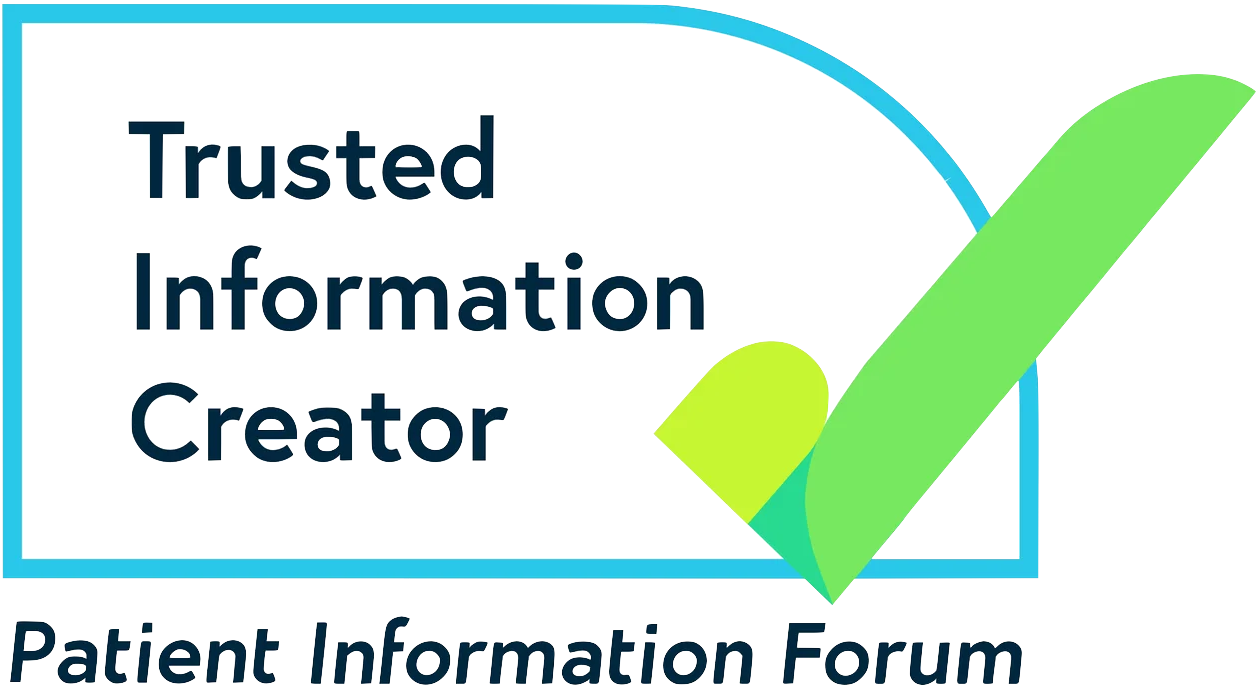Jump straight to the information you need
Key points
- Drug-resistant epilepsy is when a person still has seizures after trying 2 types of epilepsy medicine at the prescribed dose
- Drug-resistant epilepsy affects around 3 in 10 people with epilepsy
- Some people with epilepsy have a higher risk of developing drug resistance than others
- It can take time to find the right treatment to manage epilepsy effectively
- Living with drug-resistant epilepsy can be hard, but there is support available
- There are treatments available if your epilepsy medicine does not work, including surgery
What is drug-resistant epilepsy?
Drug-resistant epilepsy happens when a person has not become, or stayed, seizure free after trying 2 types of epilepsy medicines. This could have been one type of medicine alone, or a combination of medicines.
For drug-resistant epilepsy to be suspected, the medicine that does not work must have been:
- Suitable for your type of epilepsy
- Tolerated well. This means you could cope with the side effects
- Taken at a dose likely to have had an effect
Your condition would not be considered drug resistant if:
- the medicine prescribed to you is not suitable for your type of epilepsy, or
- you cannot tolerate them
This just means that you are not taking the right medicine.
Drug-resistant epilepsy may also be known as refractory epilepsy, intractable epilepsy or pharmacoresistant epilepsy.
How common is drug-resistant epilepsy?
Around 3 in 10 people with epilepsy have seizures that do not respond well to epilepsy medicine. They continue to have seizures even though they have tried 2 or more different medicines.
What increases the risk of developing drug-resistant epilepsy?
Anyone with any type of epilepsy may develop drug resistance. But there are some things that may increase your risk. These include:
- Developing epilepsy very early in life
- Having focal seizures or multiple seizure types
- Having a lot of seizures
- Epilepsy that has an identifiable cause, such as a brain injury or infection
- Epilepsy with a genetic cause, such as Dravet syndrome
- If you have a mental health issue and epilepsy, especially depression
- Status epilepticus
- Having a learning disability
Try to remember that having an increased risk does not mean your condition will become drug resistant. But it is important to speak to your epilepsy specialist as soon as possible if you have any concerns about your treatment.
Our daughter, who has autism, was having these seizures at the start of secondary school – she would tremble and say it was painful in her head. I have epilepsy, so I thought it was epilepsy, but not like mine. She was referred to a children’s neurologist who advised these were in fact functional (dissociative seizures), likely due to stress at school.
Nina
If my seizures are uncontrolled, does this mean I have drug-resistant epilepsy?
Not necessarily. It may take time to get your treatment plan right. Most people start taking epilepsy medicine at a low dose and increase it slowly until they get seizure control.
Around half of all people with epilepsy find that their seizures stop with the first medicine they try. But some people need to try a few medicines before they find one that works well for them. And some people need to take 2 or more epilepsy medicines together.
You are less likely to get seizure freedom if you have to keep trying new medicine.
There may also be other reasons why your medicine is not working well. Some things may make seizures more likely. This may include:
- Illness
- Excessive drinking or drug abuse
- Lack of sleep
- Stress
- Having your period
- Not taking your medicine as prescribed
- Not being on the right dose of medicine
Find out more about seizure triggers.
Some people may have more seizures when they are given a different version of a medicine they usually have. Your pharmacist should only give you a different version of your epilepsy medicine if it’s considered safe to do so. Find out more about switching between different versions of epilepsy medicine.
If epilepsy medicine does not work, have I been misdiagnosed?
Some people are wrongly diagnosed with epilepsy. Health conditions that have similar symptoms to epilepsy include:
- Functional (dissociative) seizures
- Syncope (faints)
- Migraine
- Movement disorders
- Hypoglycaemia (low blood sugar) and metabolic disorders
It is also possible to be diagnosed with the wrong type of epilepsy. This can lead to the wrong treatment being used, which can lead to uncontrolled seizures.
NICE recommend that an epilepsy diagnosis should be checked before starting an alternative medicine if the first drug does not work.
Talk to your specialist if you think your symptoms have been misdiagnosed. Your GP may be able to refer you to another specialist if you’re still concerned about the diagnosis.
Breakthrough seizures
Drug-resistant epilepsy is not the same as a breakthrough seizure. This is an epileptic seizure that happens after you haven’t had a seizure for a while, usually while on epilepsy medication. There is no exact definition of a breakthrough seizure, but some research defines it as a seizure that happens after 12 months of having seizure freedom.
You should be referred to an epilepsy specialist for an urgent appointment within 2 weeks if you have a breakthrough seizure.
How is drug-resistant epilepsy diagnosed?
Everyone with a suspected or confirmed epilepsy diagnosis should be referred to a specialist epilepsy service. This is sometimes called a tertiary centre or tertiary service.
NICE recommends that this should happen within 4 weeks if:
- You have an epilepsy syndrome that is likely to be drug resistant
- Your seizures are drug resistant
- Your treatment is causing side effects that you can’t cope with
Children should be referred within 2 weeks if they:
- Are under 3 years old
- Are under 4 years old and have myoclonic seizures
- Have worsening behaviour, speech or learning
You should be referred as quickly as possible if an MRI has shown that you are at high risk of developing drug-resistant epilepsy.
Anyone with drug-resistant epilepsy should be referred for an assessment to find out if surgery is a suitable option. This includes anyone who has had an MRI where no problem was found.
Children and young people should be referred to a team of doctors with advanced training in epilepsy in children. This is known as a tertiary paediatric neurology service. They may be referred onwards to a children’s epilepsy service surgery centre.
We have more information about finding the right care in England, Wales, Scotland and Northern Ireland.
Genetic testing
Genes are made up of DNA and are passed down from our biological parents. They tell our body how to develop and function.
Some people with epilepsy may be offered genetic testing. Identifying a specific genetic cause can help your doctor choose the best treatment for your seizures.
Find out more about genetic testing.
Living with drug-resistant epilepsy
Living with drug-resistant epilepsy can be hard. It can increase the risk of:
- Seizure-related accidents and injury
- Status epilepticus
- Sudden unexpected death in epilepsy (SUDEP)
Your healthcare professionals can support you in staying as safe as possible. Find out more about safety advice for people with epilepsy.
Drug-resistant epilepsy and your mental health
Having drug-resistant epilepsy can have a negative impact on your mental health.
Stress and anxiety may be caused by things like:
- Having multiple seizures a day
- Side effects from medicine
- The emotional strain of trying to find an effective treatment
It can be difficult, but it’s important to try and look after your mental health as well as your physical health. There is support available. Find out more about epilepsy and wellbeing.
Drug-resistant epilepsy, work and benefits
Drug-resistant epilepsy and uncontrolled seizures may also make it difficult to work. Find out more about epilepsy and work.
There is also financial support available, which you may be able to claim if you are in paid work or not. Find out more about benefits for people with epilepsy.
Can drug-resistant epilepsy be prevented?
It may not be possible to prevent all your seizures. But it is important to take your epilepsy medicine as prescribed. This will help you and your medical team find the best way to control your condition.
What is the treatment for drug-resistant epilepsy?
There are other treatment options available if epilepsy medicine does not work. These include the following.
Ketogenic diet for drug-resistant epilepsy
You may be recommended to follow the ketogenic diet under the care of your specialist. This is a specialist medical diet that is high in fat and low in carbohydrates.
Find out more about the ketogenic diet for epilepsy.
Epilepsy surgery
Anyone with drug-resistant epilepsy should be referred for an assessment to find out if surgery is a suitable option. This includes anyone who has had an MRI where no problem was found.
Children and young people should be referred to a tertiary paediatric neurology service. This service can make a referral to a children’s epilepsy service surgery centre.
Find out more about epilepsy surgery.
Vagus nerve stimulation (VNS) and drug-resistant epilepsy
VNS therapy involves having a small device implanted under the skin of your chest. This device is called a generator. The generator is attached to the vagus nerve in your neck by a lead. Electrical pulses are sent from the generator, along the vagus nerve to the brain.
The aim of VNS therapy is to reduce the number of seizures you have and make them less severe.
Find out more about vagus nerve stimulation.
-
Sources
Kwan, P. et al. (2010) ‘Definition of drug resistant epilepsy: Consensus proposal by the ad hoc Task Force of the ILAE Commission on Therapeutic Strategies’, Epilepsia, 51(6), pp. 1069–1077. Available at: https://doi.org/10.1111/j.1528-1167.2009.02397.x.
Sultana, B. et al. (2021) ‘Incidence and Prevalence of Drug-Resistant Epilepsy: A Systematic Review and Meta-analysis’, Neurology, 96(17), pp. 805–817. Available at: https://doi.org/10.1212/WNL.0000000000011839.
Perucca, E. et al. (2023) ‘Drug resistance in epilepsy’, The Lancet Neurology, 22(8), pp. 723–734. Available at: https://doi.org/10.1016/S1474-4422(23)00151-5.
Guery, D. and Rheims, S. (2021) ‘Clinical Management of Drug Resistant Epilepsy: A Review on Current Strategies’, Neuropsychiatric Disease and Treatment, 17, pp. 2229–2242. Available at: https://doi.org/10.2147/NDT.S256699.
Chen Z et al (2018). ‘Treatment outcomes in patients with newly diagnosed epilepsy treated with established and new antiepileptic drugs: a 30-year longitudinal cohort study’. Journal of the American Medical Association Neurology 75: 279-286
Balamurugan, E. et al. (2013) ‘Perceived trigger factors of seizures in persons with epilepsy’, Seizure, 22(9), pp. 743–747. Available at: https://doi.org/10.1016/j.seizure.2013.05.018.
Bonnett LJ, et al. (2017) Risk of a seizure recurrence after a breakthrough seizure and the implications for driving: further analysis of the standard versus new antiepileptic drugs (SANAD) randomised controlled trial. BMJ Open. 2017 Jul 10;7(7):e015868. doi: 10.1136/bmjopen-2017-015868. PMID: 28698335; PMCID: PMC5726069.
Clinical Knowledge Summaries (2025) Epilepsy Scenario: Routine epilepsy review | Management | Epilepsy | CKS | NICE (Accessed: June 2025)
Oto, M. (Meritxell) (2017) ‘The misdiagnosis of epilepsy: Appraising risks and managing uncertainty’, Seizure, 44, pp. 143–146. Available at: https://doi.org/10.1016/j.seizure.2016.11.029.
Clinical Knowledge Summaries (2024) Differential diagnosis | Diagnosis | Epilepsy | CKS | NICE Available at: https://cks.nice.org.uk/topics/epilepsy/diagnosis/differential-diagnosis/ (Accessed: 28 February 2025).
Gesche, J. et al. (2022) ‘Pseudoresistance in idiopathic/genetic generalized epilepsies – Definitions, risk factors, and outcome’, Epilepsy & Behavior, 130, p. 108633. Available at: https://doi.org/10.1016/j.yebeh.2022.108633.
British National Formulary (no date) Epilepsy Available at: https://bnf.nice.org.uk/treatment-summaries/epilepsy/ (Accessed: 28 February 2025).
NICE (2022) Epilepsies in children, young people and adults: Information and support. Available at: https://www.nice.org.uk/guidance/ng217/chapter/2-Information-and-support (Accessed: 18 July 2024).
Got more questions?
Our expert advisors can help you with any questions you might have about drug-resistant epilepsy or anything else related to living with epilepsy.





